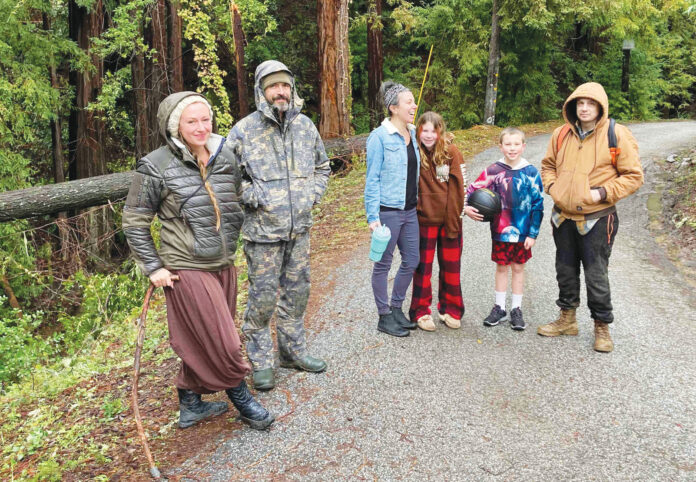
Residents of the Harmon Gulch neighborhood, just outside of Boulder Creek, whose road washed out in the recent storms, say Federal Emergency Management Agency (FEMA) officials stood them up for multiple meetings set for a location some had to walk a mile or more to reach.
The rural Santa Cruz County disaster victims have been running out of propane and water after their road was washed out by the series of January atmospheric rivers that swept through the region.
“Are you the FEMA guy?” a man waiting at the intersection of Harmon Gulch and Bear Creek Road asked a Press Banner reporter Sunday afternoon. He appeared dejected to learn it was not, in fact, a federal official who’d pulled up.
Only the first home is tied into the San Lorenzo Valley Water District—a connection that’s been propped up temporarily in a makeshift fashion with redwood branches. The rest have dwindling supplies of drinking water, and all have been rationing heating materials.
Heather Konopa, 42, who lives in that first home with her husband—a veteran—their three kids, three dogs and “a bunch” of cats, said their road became impassable the night of Jan. 13.
They were able to get their vehicle out and are now parked in the Fernwood neighborhood. But to get there they have to cross Bear Creek Road, a busy commuter route to Silicon Valley.
“It’s very dangerous,” she said. “We have to walk this at least two times a day.”
Her 11-year-old daughter Lily, a fifth grader at Boulder Creek Elementary, says her days have become more regimented.
Now, she has to make her lunch the day beforehand and is awoken at 6:50am, so she can get ready before setting out down what her mom calls “the world’s steepest driveway.”
Her 9-year-old brother Ely, a fourth grader, remembers the chaos of the storms, where—for safety—he had to sleep in the downstairs office in case a tree fell on the house.
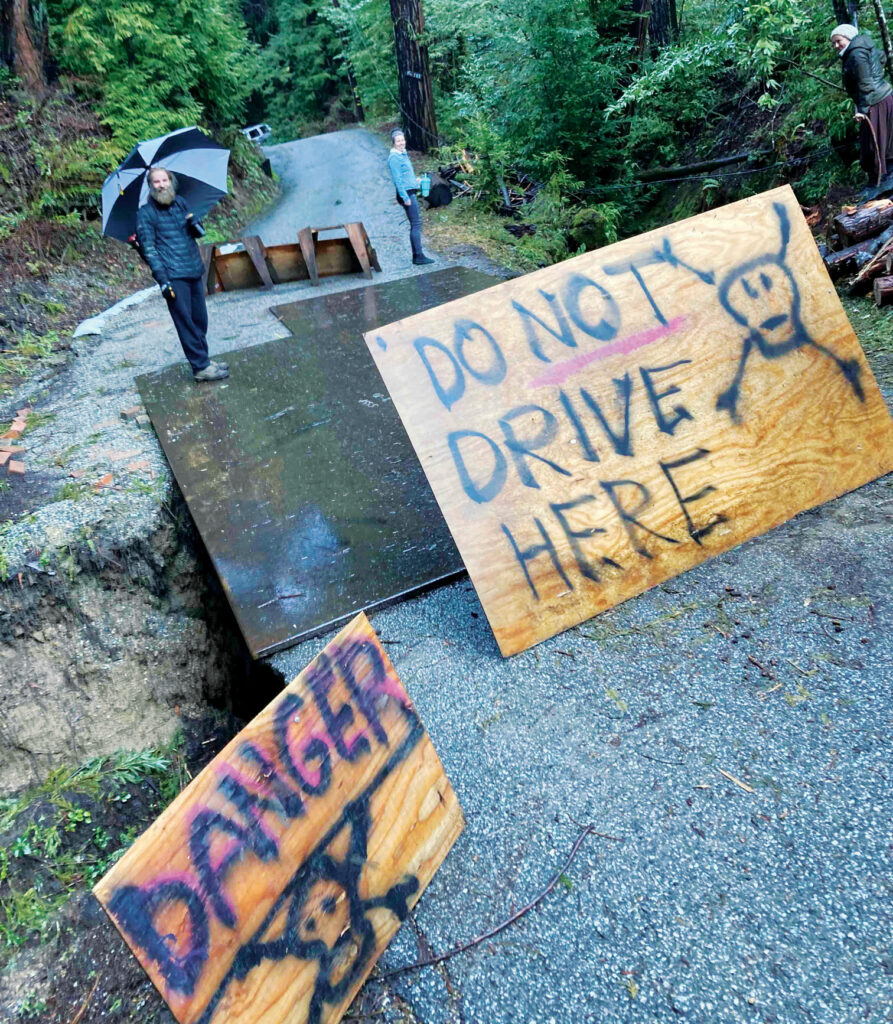
Things sure aren’t back to normal.
“I have to take five-minute showers,” he said. “We can’t drive and we have to walk on the street.”
He knows his mom is still OK with him inviting friends over to play, but that’s been more challenging in the aftermath of the storms.
“I have to go to their houses a lot of the time,” said the boy, who was clutching a basketball.
His mom explains that things have just become more difficult since the washout.
“You can only shop for what you can carry,” she said. “Our only heat is a wood-burning stove.
“We’re trying to get the authorities to make this a priority.”
While FEMA gave them a lump-sum payment of $2,700, it seems like it’s going to take months to get contractors out to fix the road, she added.
Konopa explained it was the second day in a row that FEMA didn’t show up.
The Press Banner asked FEMA multiple times about residents’ claims they’d been stood up, but it declined to answer. Instead, the agency reiterated its pledge to help the Harmon Gulch neighbors.
“Disaster Survivor Assistance Teams…have been to that location several times,” said Tiana Suber, a FEMA spokesperson. “Talking to the residents there, they are registered with FEMA, but given that they shared with us that they don’t have internet service, it was hard for them to check on their application status.”
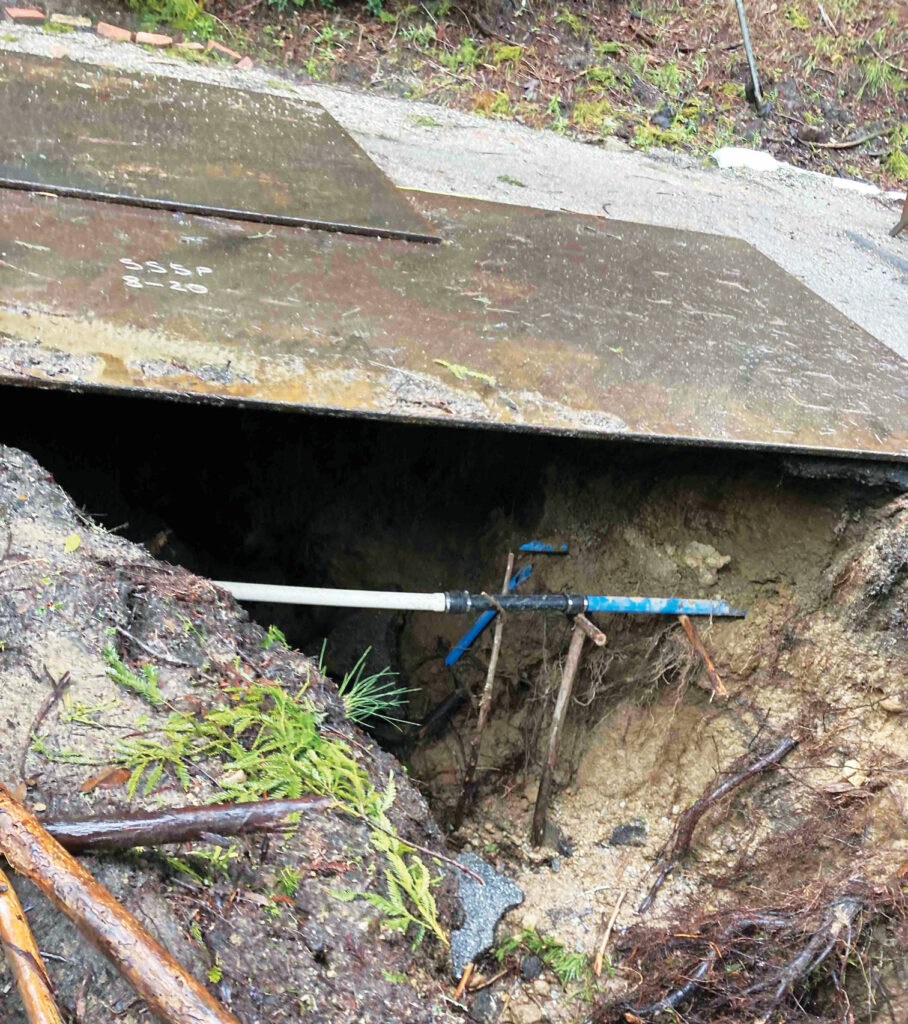
A meeting was scheduled for Feb. 9 at the Felton Disaster Recovery Center at the Felton library so storm victims could sign up for assistance or receive help with individual cases, the spokesperson added.
“The County, FEMA and the Harmon Gulch community are working on plans to try and repair the damaged road,” Suber said.
In fact, she says she decided not to put in a claim for fear it would distract the federal officials from helping the neighborhood get its more serious needs met first.
Brian Litzinger, 59, bought into Harmon Gulch in 1994. He lives out of state, but owns two parcels here. He tried to return home after a visit but turned back when Highway 80 was closed a couple months ago.
“I’m not sure I should leave at this point,” said the man, who neighbors explained has his own tractor. “There’s work to be done.”
One resident, Rebekah Uccelini, has become a point-person for the 23 families stuck on the other side of the washout.
“We’ve been in limbo,” she said. “It’s been an interesting thing to navigate.”
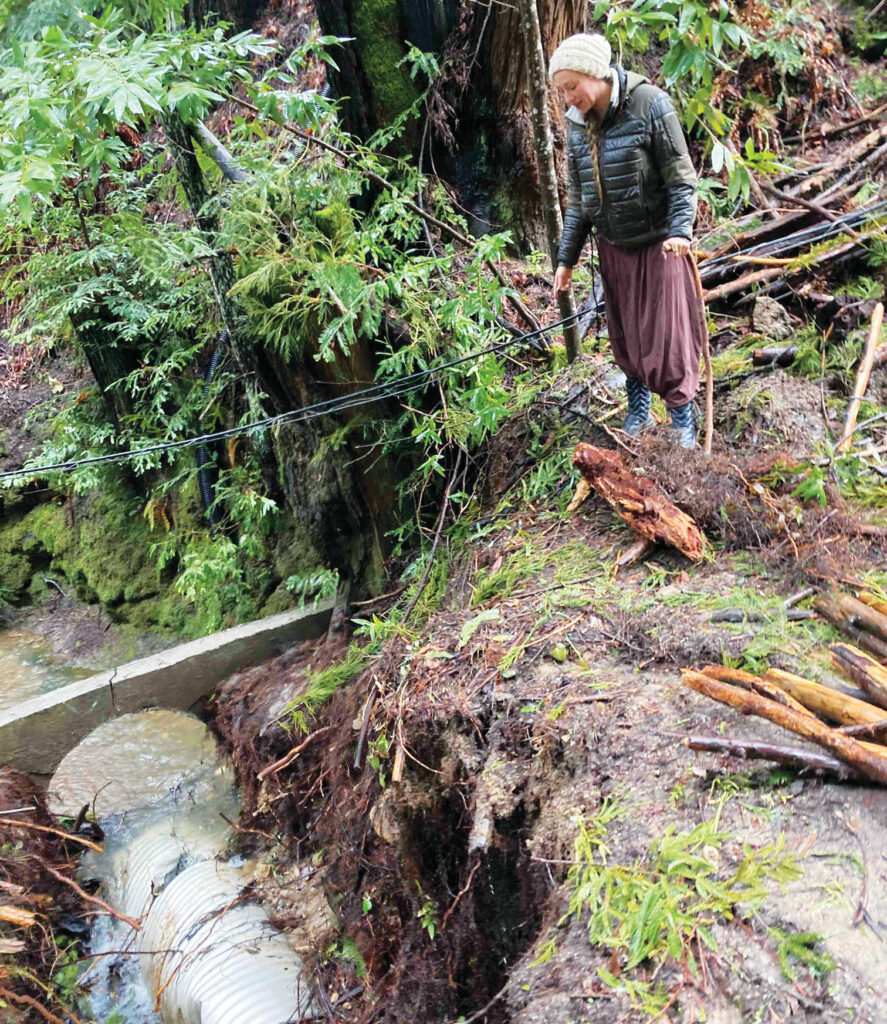
Some of the neighbors are victims of the CZU Lightning Complex Fire; some have cancer-care or other medical needs.
Spending time waiting for FEMA to arrive for a meeting they never showed up for just caused other priorities to get pushed down the list, she explained.
“It’s disappointing, to say the least,” she said. “Time is one of those precious things we don’t have a lot of.”
The residents are hoping to get a temporary bridge installed by the County.
That same day, State Assembly representative Gail Pellerin was busy making calls, trying to find someone who could at least bring the neighbors some firewood.
“Everyone’s trying to get some attention here and get some resources for these folks,” she said. “They are down and out.”
She half-jokingly remarked that her own ability to help was somewhat limited because—since she moved down to Santa Cruz—she doesn’t carry a chainsaw around with her anymore.
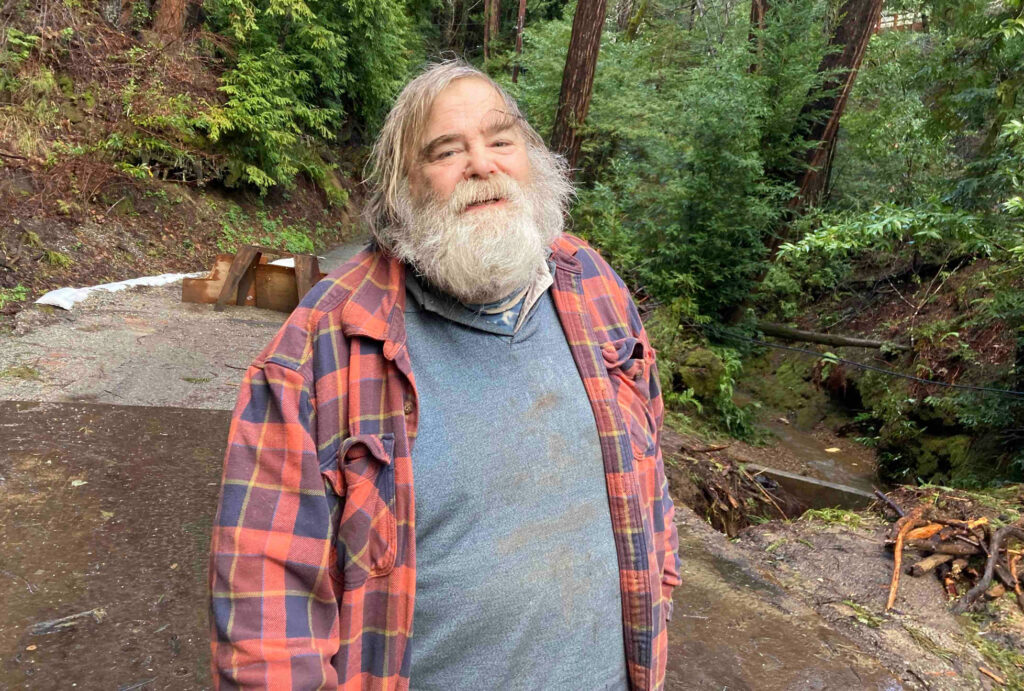
Robert Wojtasiewicz, a 67-year-old who walks with the help of a cane, says he’s already been prevented from leaving during one emergency.
“I needed to get out,” he said, recalling the crazy January weather. “I have medical needs.”
And yet he, too, was pitching in, trying to maintain their access.
“I was up to my knees cleaning culverts,” he said. “Generally, people in the mountains, we take it in stride, but this was a bigger one than we were ready for… On the one hand, it’s just ‘living in the mountains.’ On the other hand, we could use some help.”
On Wednesday, Uccelini confirmed FEMA never did show on Sunday to meet with the group, although she said the agency did make it up Tuesday; however, it couldn’t do much to help because of internet connectivity issues. At press time she was working on getting a bus to bring community members to the Felton meeting.


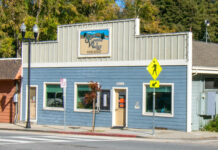










Hi there, The headline is hard to read as I know that FEMA is doing their best. I wanted to clarify that this story was written last week and residents were exhausted and frustrated. I don’t want to focus of this issue to be on any agency being at fault. Of course it is hard for residents to be told to walk down to the end of the road to meet with a FEMA rep that doesn’t show up especially in the rain or if it is cold. That is indeed frustrating and I am sorry that it happened to 3 of our residents. However FEMA did send a whole team over on Wednesday this past week along with CALOES, and a gentleman from SBA grants and a rep for Gail Pellerins office. They took time out of their day to meet the residents and to better understand the situation. They had hoped to be able to get people signed up and to check on applications but unfortunately they didn’t have internet or any service at the end of the road so they asked us to all come to the Disaster Recovery Center on Thursday evening. We brought up 14 households and I walked them through the appeals process and and each household submitted an appeal. We really appreciate all the agencies for staying late to ensure we got through the process and for CALOES, County Reps, and FEMA for staying until 8pm until we got through the last person. We are now meeting each day for a check in and I feel like things are moving forward with more clarity.
I’m happy to read your comment. It has been difficult to say the least for many who live here. Especially for some roads hit hard. But , we do have resources out there, people just need to become aware of the help. Many years ago a person who lives on our road was aware of a program through the county CSA for the rural roads. They gathered all the residents on our road to vote in the CSA. From then on our dirt road has gotten better, it is far from perfect. If your interested you can contact me & I can give you information I have. This CSA for our community has been a life saver. dd*********@***il.com